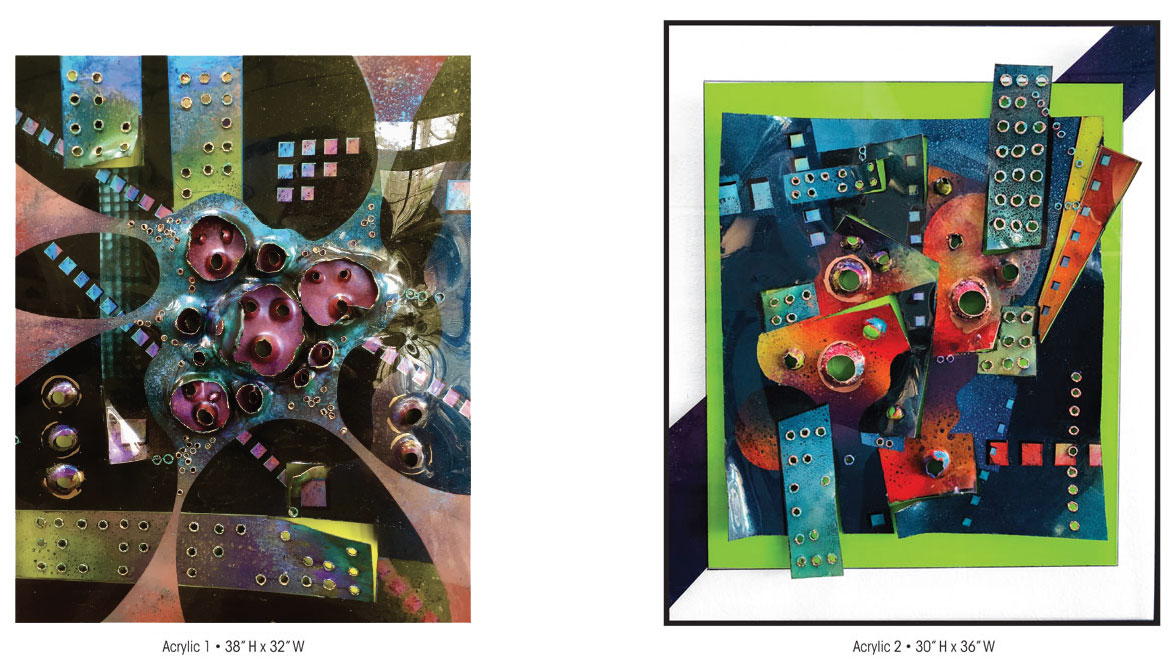Ron Mabry
Architect/Artist
Born in Shreveport, Louisiana, Ron attended Louisiana University where he received a Bachelor of Arts degree in Architecture. After many years in the field of architecture, Ron moved to the Florida Keys in the 1990s, where his work as an artist prevailed over his career as an architect. He currently resides in East Texas and practices as both artist and architect.
His work has been represented in galleries in Key West and St. Augustine, Florida as well as in Taos and the famed Canyon Road of Santa Fe, New Mexico.
Ron refers to himself as a “self-teaching and learning” artist rather than “self taught” as the latter implies past tense or completion.
He views his work as a journey, morphing from the last completed work to the next, telegraphing emotions that are personal and that do not require explanation, only acknowledgement to those of similar queries.
He creates his work not to exist as a placeholder on a wall or in a space, but to share emotions that may also be recognized by others.
His body of work ranges from painting and sculpture, to architecture. The mediums include acrylic paint on acrylic sheets, cast stone and steel, wood and wood fiber, as well as experimental. His most recent works represent a learning curve in his technique, with the use of heat-formed acrylic and reverse painted acrylic paint.
For the most part, Ron’s work is representative of a solo exhibit for himself, his wife, family and friends. Ron describes his current relationship with his work, saying “As the years seem to accumulate, I realize we are each on our own individual life’s journey and perhaps sharing with those that respond to my interpretations may offer a reference point on their own journey.
Ron’s work focuses on soul-felt interpretations of nature’s earth forms and scapes of a micro and macro scale. His extraction of form, pattern, and color, with emphasis on abstract emotions, offers a freedom from literal expression and encourages depth of thought and message.
At this point in the span of his work, Ron is focused on experimenting with delivery techniques organic to his message.
The heat-formed acrylic and applied back painting technique is free-hand, using a variety of methods. The heat application process influences and directs shape, form and texture,while allowing the acrylic medium to participate, having a voice in the outcome of the work, and recognizing the inherent properties of the material. A torch, heat gun, brush burner, hair dryer and propane burner are as common in this process as an artist’s paint brush on canvas.
Ron feels this fluid and organic interaction between artist and medium recognizes a partnership between the two, at times producing tension, at times producing compassion.
Allowing the medium to participate and speak to the artist’s direction provides the confluence of organic and technique. The back-paint application techniques utilize a variety of solvents and water as a vehicle for the pigments, providing the same freedoms allowed to the forming of the acrylic canvas.
“As I execute from behind the canvas, the negotiations between artist, technique and medium sometimes collide, resulting in compromise, capitulation, or somewhere in between, much as life itself.”
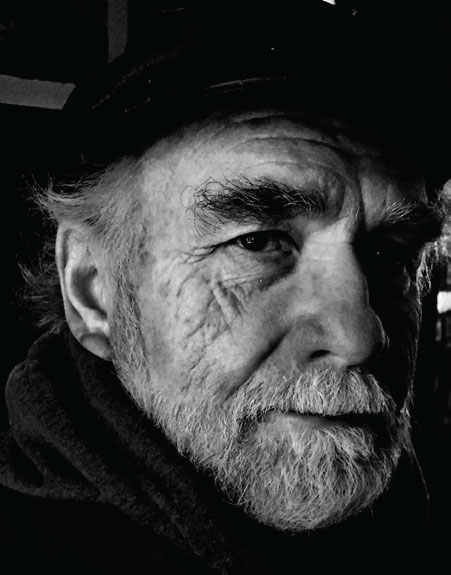
Ron Mabry
Big Sandy, Texas
mabryarch@aol.com
https://www.ronmabryarchitects.com
(903) 521-1391

What at times seems to be aimless wandering, with clutched hands, downward head and a pondering focus, Ron’s silent observations during his journey are building a vocabulary and reference for his work. A crack in the sidewalk, a creek wash, decay of matter…
Gallery
Transmogrification Series

Desert Moon
Heat formed acrylic sheets with metalic pigments
34″(w) x 40″(h)
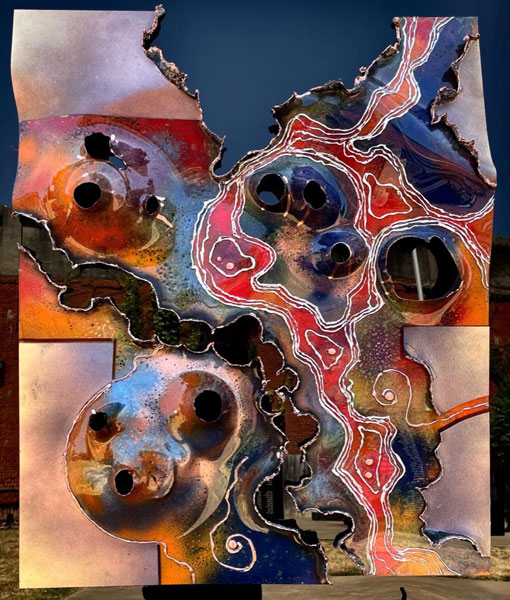
Desert Soul
Heat formed acrylic sheets with metalic pigments
34″(w) x 40″(h)
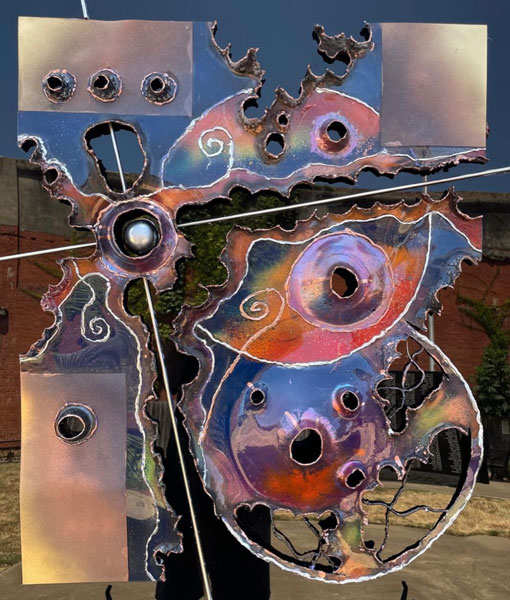
Intersection At Nowhere
Heat formed acrylic sheets with metalic pigments
34″(w) x 40″(h)
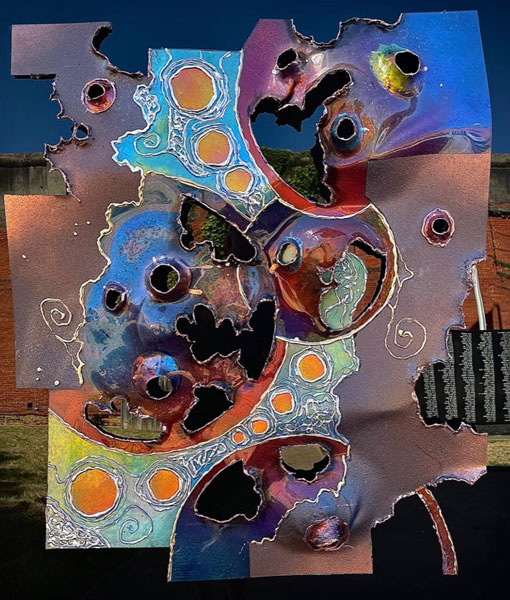
Three Rings Plus One
Heat formed acrylic sheets with metalic pigments
34″(w) x 40″(h)
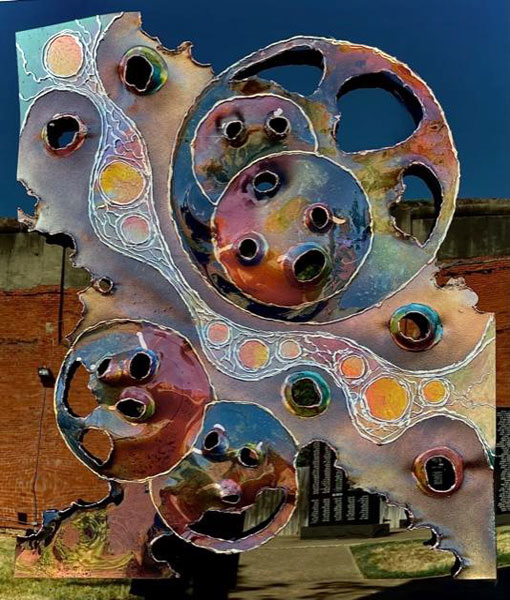
Three Rings Plus Two
Heat formed acrylic sheets with metalic pigments
34″(w) x 40″(h)
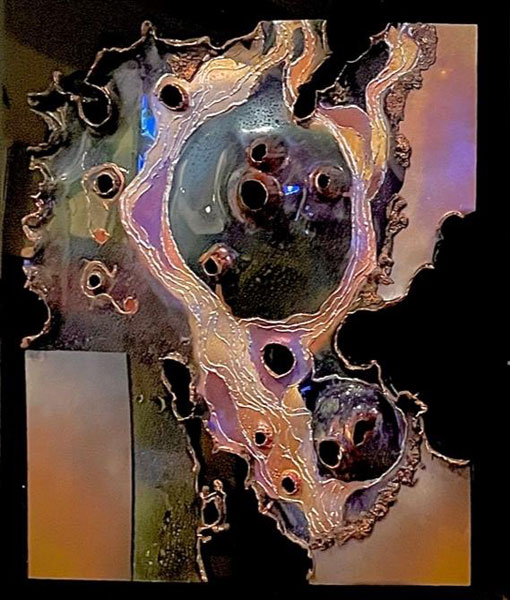
Desert Evenings
Heat formed acrylic sheets with metalic pigments
34″(w) x 40″(h)
Steel & Concrete

Moulded Foam Board

Wood & Wood Fiber

Acrylic on Acrylic

Heated Formed Acrylic
